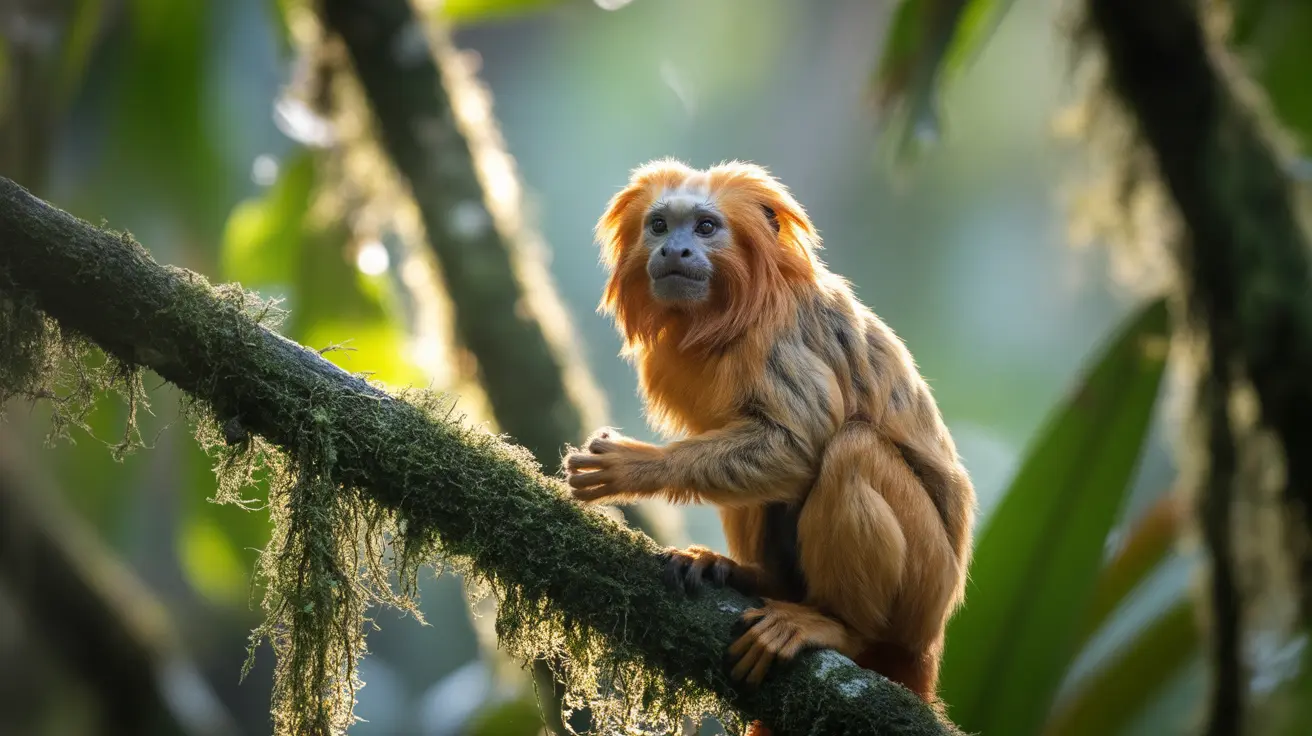The remarkable journey of tamarins from victims of the exotic pet trade to symbols of successful wildlife conservation stands as an inspiring testament to what dedicated preservation efforts can achieve. These small, charismatic primates have overcome numerous challenges to become one of conservation's most encouraging success stories.
Once facing near-extinction due to habitat loss and illegal wildlife trafficking, several tamarin species, particularly the golden lion tamarin, have made significant strides toward recovery through carefully coordinated conservation initiatives. Their story demonstrates how focused protection efforts, combined with scientific expertise and community involvement, can help endangered species rebound.
The Impact of Atlantic Forest Tamarins
The Atlantic Forest of Brazil, home to various tamarin species, has been central to these primates' survival journey. This crucial ecosystem has faced extensive deforestation, directly affecting tamarin populations and pushing several species to the brink of extinction.
Addressing Tamarin Habitat Loss
Conservation efforts have focused intensively on protecting and restoring the remaining fragments of tamarin habitat. The creation of protected areas and the establishment of habitat corridors have been crucial steps in ensuring these primates can move freely between forest patches, maintaining healthy populations.
Reintroduction of Captive Tamarins
A cornerstone of tamarin recovery has been the successful captive breeding and reintroduction programs. These initiatives have helped boost wild populations while maintaining genetic diversity - a critical factor for species survival.
Tamarin Population Recovery
Through careful monitoring and management, several tamarin populations have shown promising signs of recovery. Conservation teams have implemented various strategies to protect these primates, including:
- Creating protected reserves
- Establishing breeding programs
- Developing habitat corridors
- Engaging local communities in conservation efforts
Combating Tamarin Poaching Solutions
The fight against illegal wildlife trafficking has been crucial in tamarin conservation. Enhanced law enforcement, combined with public education about the importance of protecting these species, has helped reduce the threat of poaching and illegal pet trade.
Exotic Pet Trade Tamarins
Historical demand for tamarins as exotic pets contributed significantly to their population decline. Today, strict regulations and increased awareness have helped curtail this threat, though ongoing vigilance remains essential.
Tamarin Conservation Projects Brazil
Brazilian conservation initiatives have played a pivotal role in protecting various tamarin species. These projects combine scientific research, habitat protection, and community engagement to ensure long-term success.
Frequently Asked Questions
What makes tamarin conservation efforts so successful?
The combination of captive breeding programs, habitat protection, and community involvement has created a comprehensive approach to tamarin conservation. These coordinated efforts have helped address multiple threats simultaneously.
How do habitat corridors help tamarin populations?
Habitat corridors connect isolated forest fragments, allowing tamarins to move between different areas. This movement is crucial for maintaining genetic diversity and helping populations remain healthy and resilient.
What role do local communities play in tamarin conservation?
Local communities are essential partners in conservation efforts, helping to protect tamarin habitats and report illegal activities. Their involvement and support are crucial for the long-term success of conservation initiatives.
The story of tamarin conservation continues to evolve, showing how dedicated conservation efforts can make a real difference in protecting endangered species. As these programs continue to develop and adapt, they provide valuable lessons for other conservation initiatives worldwide while ensuring these remarkable primates have a secure future in their natural habitats.






